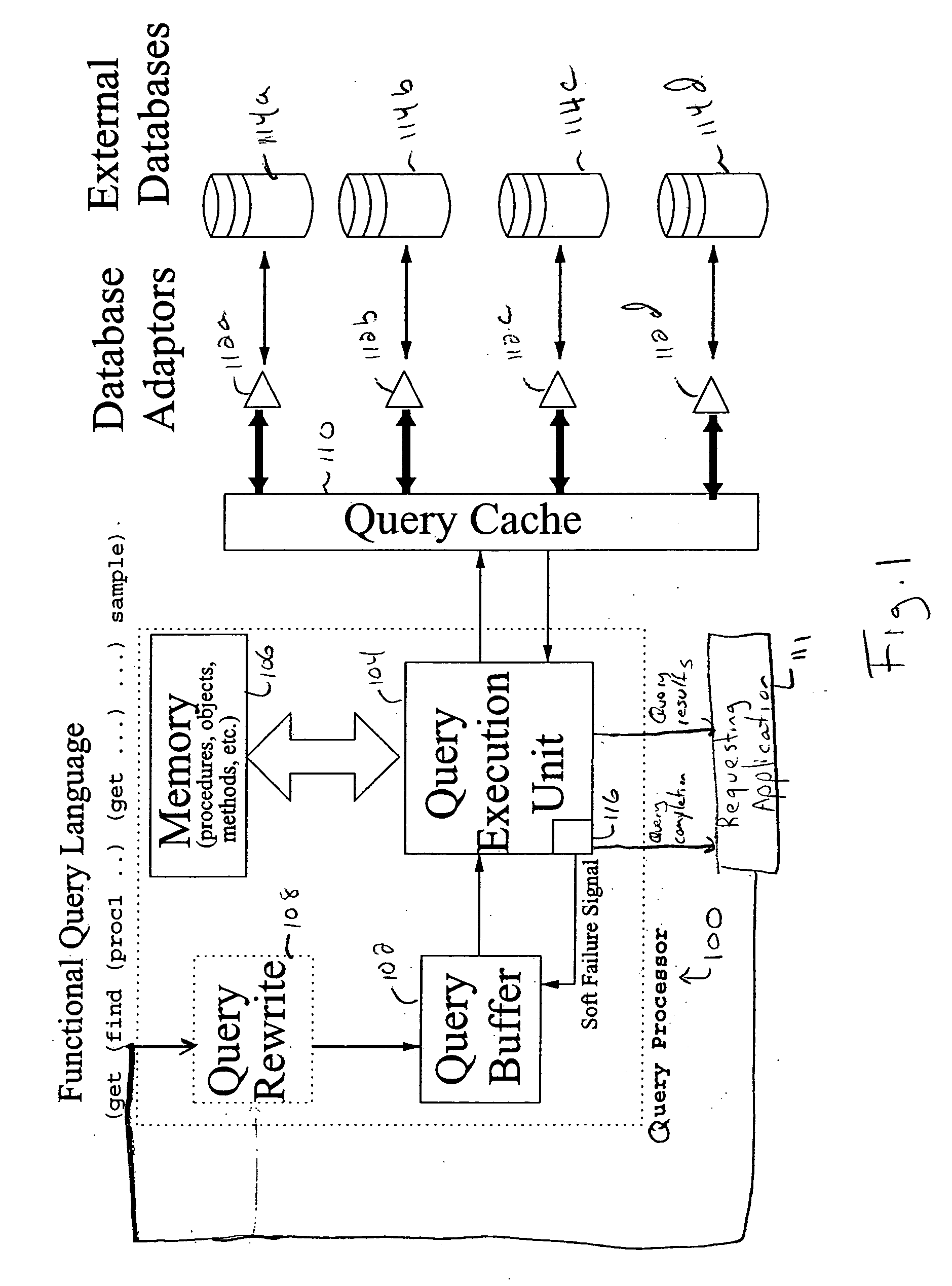Systems and methods for processing queries
a technology of system and method, applied in the field of database-driven applications, can solve the problems of inefficient patterns of query and access that make sense for a particular application, inability to handle rewriting approaches directly, and inability to optimize the effect of rewriting approach, so as to maximize the opportunity for optimization and efficient execution
- Summary
- Abstract
- Description
- Claims
- Application Information
AI Technical Summary
Benefits of technology
Problems solved by technology
Method used
Image
Examples
an example
Suppose one has a genealogical database to which one wishes to apply certain queries. The genealogical database contains objects describing individuals and their relationships to other individuals. The database also contains other information about those same individuals. For instance, it might describe dates of birth and death, employment, military service, residence, travels, etc.
Suppose one wants to execute a query whose English form might be: Find all the descendants of “Joe Smith” whose parents were in the military
whose transcription into computer code might look like this:
(define (get-descendants x) (choice (get x children) ; This indicates that both options areexplored (get-descendants (get x children))))(filter-choices (candidate (get-descendants “Joe Smith”)) (exists ‘event “military service”‘subject (get candidate ‘parent)))
This code fragment begins by defining a procedure ‘get-descendants’ which recursively gathers the identified children of an individual from ...
PUM
 Login to View More
Login to View More Abstract
Description
Claims
Application Information
 Login to View More
Login to View More - R&D
- Intellectual Property
- Life Sciences
- Materials
- Tech Scout
- Unparalleled Data Quality
- Higher Quality Content
- 60% Fewer Hallucinations
Browse by: Latest US Patents, China's latest patents, Technical Efficacy Thesaurus, Application Domain, Technology Topic, Popular Technical Reports.
© 2025 PatSnap. All rights reserved.Legal|Privacy policy|Modern Slavery Act Transparency Statement|Sitemap|About US| Contact US: help@patsnap.com



